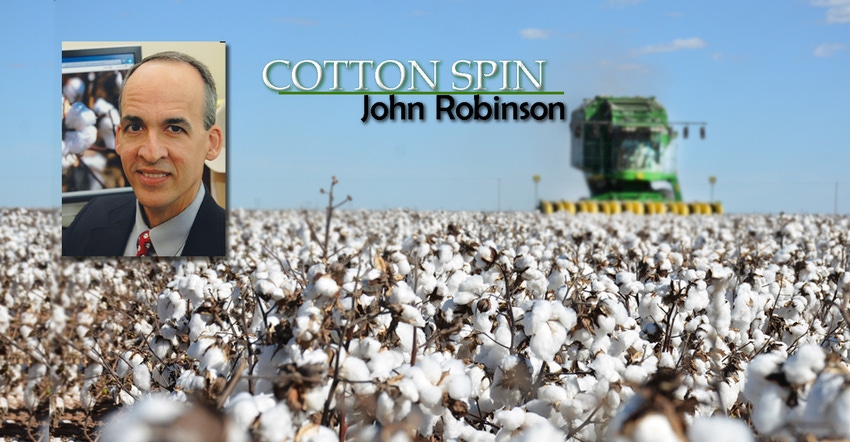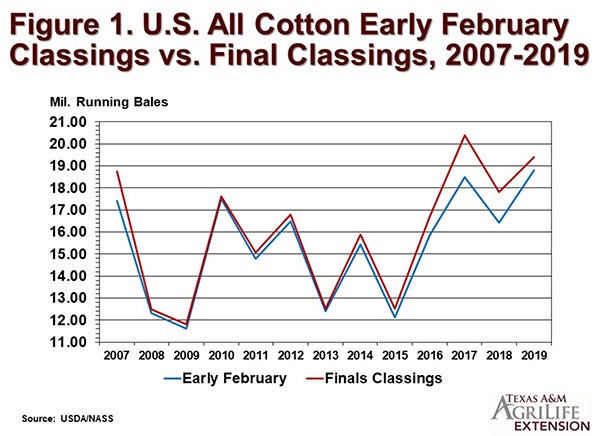
It is relatively late in the marketing year to have much uncertainty about the size of the U.S. cotton crop. We have already seen some major downward adjustments in USDA NASS’s projected production of U.S. cotton. The month over month cut to forecasted U.S. production in its Jan. 12 Crop Production report was larger and later than normal.
There are additional puzzles. As of Jan. 15, USDA NASS reported 13,857,878 statistical bales ginned to date. As of Jan. 21, USDA AMS reported 14,037,194 statistical bales classed to date. Both of those are cumulative numbers, normally reported in running bales, and converted here using assuming 1.03 statistical bales per running bale.
The first puzzle is how could there be more bales classed than ginned? Obviously, this doesn’t really happen since classing samples are physically taken from previously ginned bales and then sent to the classing office. Perhaps the discrepancy is just a normal feature of lags in sampling and reporting, but it is still a puzzle. That lag may be heightened by AMS classing numbers being updated weekly compared to NASS ginnings data which are updated semi-monthly.
The second and more important puzzle is the discrepancy between these previous data and USDA NASS’s 14,953,000 statistical bales forecasted of forecasted production, as of the January 12 Crop production report. It seems a little late in the season to have a 900,000-bale discrepancy, especially when ginning is reportedly wrapping up in the denser cotton producing areas. Of course, if NASS makes another large cut to its production forecast in February, that may resolve the discrepancy. But another late and large cut belies the oddity of the 2020 crop situation.
Even at this point in the marketing year, there is usually some ginning and classing to be done before the final number. Figures 1 and 2 show how early February cumulative classings and ginnings compare to final classings and ginnings, respectively. In recent years the difference has been wider, averaging between 93% and 94% of the final number for both classings and ginnings. These historical data imply that by the calendar, there is still time to square the differences between ginnings, classings, and NASS’s production forecast. But if the pace of ginning of the 2020 crop was earlier than normal, then maybe the remaining bales just aren’t there, in which case NASS’s number will be trimmed more.


For additional thoughts on these and other cotton marketing topics, please visit my weekly on-line newsletter at http://agrilife.org/cottonmarketing/.
About the Author(s)
You May Also Like




